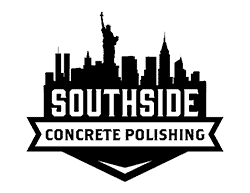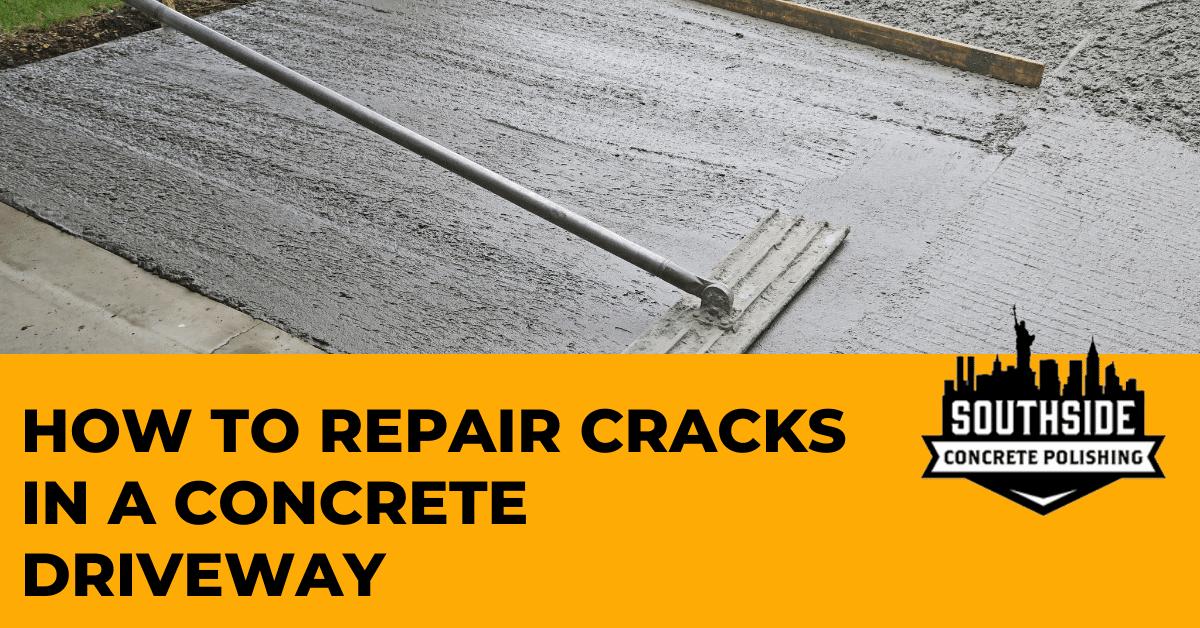Cracks in a concrete driveway can be a common occurrence and, if left untreated, can lead to various issues. They not only detract from the overall appearance of your driveway but can also pose potential hazards and compromise the structural integrity over time.
Treating cracks in a concrete driveway involves several steps. The first step is to assess the severity and type of cracks. Hairline cracks, for instance, may only require minor repairs, while larger or deeper cracks may need more extensive measures. Once you have evaluated the cracks, you can proceed with cleaning the cracks thoroughly, removing any dirt, debris, or loose materials using a wire brush or compressed air.
What Materials Do You Need to Repair Cracks in a Concrete Driveway?
To repair cracks in a concrete driveway, you will need several materials. Here are the essential items typically required for the repair process:
1. Safety Equipment
Prioritize safety by wearing appropriate protective gear, including safety goggles, gloves, and a dust mask.
2. Cleaning Tools
Prepare the cracks by thoroughly cleaning them. You may need a wire brush, stiff bristle brush, or a pressure washer to remove dirt, debris, and loose materials from the cracks and surrounding area.
4. Crack Filler/Sealant
Select a suitable crack filler or sealant for your specific needs. Depending on the size and type of cracks, you can choose from liquid crack fillers, concrete caulk, epoxy-based products, or polyurethane sealants. Ensure that the product is compatible with concrete and designed for crack repairs.
5. Applicator Tools
Depending on the chosen crack filler, you may need an applicator tool such as a caulk gun, trowel, putty knife, or a specialized crack repair applicator. These tools will help you evenly apply the filler or sealant into the cracks.
5. Patching Compound (if necessary)
For larger or wider cracks, you may require a patching compound. This compound helps fill and repair more substantial damage to the concrete surface. It is available in powder or pre-mixed forms and can be applied using a trowel or putty knife.
6. Concrete Resurfacer
In cases where extensive damage or deterioration is present, a concrete resurfacer may be needed. This material is typically a polymer-modified overlay that can be applied to the entire driveway surface to restore its appearance and structural integrity.
7. Concrete Cleaner
Ensure that the concrete surface is clean and free from any contaminants before applying the crack filler or sealant. A concrete cleaner or degreaser can help remove stains, oil spots, or other substances that may interfere with the adhesion of the repair materials.
8. Concrete Bonding Agent (if necessary)
In some instances, particularly for deeper or wider cracks, a concrete bonding agent may be recommended. This agent enhances the bond between the existing concrete and the repair material, providing better adhesion and long-term durability.
9. Tamping Tool or Tamper
For proper compaction and leveling of the crack filler or patching compound, a tamping tool or tamper can be helpful. It ensures that the repair material is firmly packed into the crack or damaged area.
Preparation to Repair Cracks in a Concrete Driveway: What You Should Know
Preparing the surface before repairing cracks in a concrete driveway is crucial for ensuring a successful and long-lasting repair. Here are the steps to follow to prepare for crack repair:
- Prioritize safety by wearing appropriate protective gear, including safety goggles, gloves, and a dust mask. This will protect you from any potential hazards during the preparation process.
- Thoroughly clean the cracked area and the surrounding surface. Use a wire brush or a stiff bristle brush to remove dirt, debris, loose concrete particles, and any vegetation that may have grown in the cracks.
- Use a chisel, scraper, or screwdriver to carefully remove any loose or deteriorated concrete from the cracks. This will create clean edges and a stable base for the repair material to adhere to.
- If there are oil or grease stains on the concrete surface, use a concrete cleaner or degreaser to remove them.
- Allow the cleaned surface to dry completely before proceeding with the crack repair. This will ensure proper adhesion of the repair material.
- If the cracks in your concrete driveway are located near expansion joints, it is essential to inspect and ensure these joints are intact and in good condition. If necessary, repair or replace any damaged or deteriorated expansion joints to maintain the integrity of the driveway.
- Take precautions to protect any adjacent surfaces or landscaping near the cracks. Use plastic sheeting or masking tape to cover or shield these areas from accidental spills or damage during the repair process.
Following these preparation steps will help you create a clean, stable, and properly primed surface for the crack repair. This will enhance the adhesion and effectiveness of the repair materials, ensuring a durable and long-lasting solution for your concrete driveway. You
Factors to Consider When Choosing the Right Repair Method
When choosing the right repair method for cracks in a concrete driveway, several factors should be considered. These factors will help determine the most appropriate approach for your specific situation. Here are some key considerations:
1. Crack Type and Severity
Assess the type and severity of the cracks in your concrete driveway. Cracks can vary in size, depth, and pattern, such as hairline cracks, shrinkage cracks, or larger structural cracks. Different repair methods are suitable for different crack types.
For example, hairline cracks may only require a liquid crack filler, while wider or deeper cracks may need more extensive measures like patching or resurfacing.
2. Cause of Cracks
Cracks can result from various factors, including freeze-thaw cycles, soil movement, heavy loads, or inadequate construction practices. Understanding the cause can help determine the appropriate repair method and prevent future crack formation. For Instance, if the cracks are due to underlying soil movement, addressing the soil-related issue may be necessary alongside crack repair.
3. Crack Movement
Assess whether the cracks are static or dynamic. Static cracks do not exhibit significant movement, while dynamic cracks may expand or contract due to temperature changes or structural shifts.
If your cracks are dynamic, flexible repair materials like polyurethane sealants may be more suitable, as they can accommodate movement without cracking or breaking.
4. Aesthetic Considerations
Consider the desired aesthetic outcome of the repair. Some repair methods, such as crack filling or sealing, may be more discreet and blend with the existing concrete. In contrast, others, like patching or resurfacing, may alter the appearance of the driveway more noticeably. Choose a repair method that aligns with your preferences for the final look of the repaired area.
5. Budget and Time Constraints
Evaluate your budget and time constraints for the repair project. Different repair methods have varying costs and time requirements; a simple crack filling with a liquid filler may be more cost-effective and quicker to apply compared to more involved patching or resurfacing techniques. Consider your budget and availability to determine a suitable repair method.
6. DIY vs. Professional Assistance:
Assess your skills, experience, and comfort level with DIY projects. Some repair methods, such as minor crack filling, can be relatively straightforward for homeowners to tackle themselves. However, more complex repairs, like extensive patching or resurfacing, may require professional assistance to ensure proper execution and long-term durability.
How to Repair Cracks in a Concrete Driveway
Repairing cracks in a concrete driveway is a relatively straightforward process that can be done with the right tools and materials. Here is a step-by-step guide on how to repair cracks in a concrete driveway:
Step 1: Prepare the Crack
Start by cleaning the crack and the surrounding area. Use a wire brush, stiff bristle brush, or a pressure washer to remove any dirt, debris, or loose concrete particles. Ensure that the crack is free from any contaminants that could interfere with the adhesion of the repair material.
Step 2: Fill Small Cracks
For hairline or small cracks, a liquid crack filler or concrete caulk can be used. Cut the tip of the filler tube or caulk cartridge at a 45-degree angle and apply the filler directly into the crack. Smooth the surface with a putty knife or a trowel, ensuring that the filler is level with the surrounding concrete.
Step 3: Repair Large Cracks
For wider or deeper cracks, a patching compound is typically used. Mix the patching compound according to the manufacturer’s instructions. Use a trowel or putty knife to apply the compound into the crack, filling it. Smooth the surface and level it with the surrounding concrete.
Step 4: Allow the Repair to Cure
Give the repair material sufficient time to cure and harden. Follow the manufacturer’s instructions for the recommended curing time. This is usually around 24 to 48 hours.
Step 5: Finishing Touches
Once the repair has cured, you can further improve the appearance and longevity of the driveway by applying a concrete sealer. This will protect the repaired area from moisture, chemicals, and UV damage. Choose a sealer suitable for driveways and follow the application instructions provided.
Remember to prioritize safety by wearing protective gear, such as safety goggles and gloves, throughout the repair process. Also, carefully read and follow the instructions and precautions provided by the manufacturer for all the products you use.
What is the Importance of Curing and Finishing Repaired Cracks?
The importance of curing and finishing repaired cracks in concrete is to ensure the strength, durability, and visual appeal of the repair.
Curing allows the repair material to achieve its maximum strength and bond properly with the existing concrete, ensuring long-lasting performance.
Finishing, on the other hand, enhances the appearance of the repaired cracks, making them blend seamlessly with the surrounding concrete and providing protection against moisture, chemicals, and wear.
How to Prevent Cracks on Your Concrete Driveway
Preventing cracks on your concrete driveway is essential for maintaining its longevity and appearance. These are some steps you can take to minimize the occurrence of cracks:
1. Ensure your driveway is installed correctly by a reputable contractor, with attention to site preparation, reinforcement, and proper concrete mix design.
2. Include control joints in the driveway’s design to allow for controlled cracking and stress relief.
3. Consider reinforcing your driveway with materials like steel rebar or wire mesh to distribute loads and minimize cracking.
4. Prepare the subgrade properly by ensuring adequate compaction and drainage measures to prevent settlement and shifting.
5. Perform regular maintenance, including sealing the surface periodically and addressing any issues promptly, to protect against moisture and deterioration.
However, it’s important to note that some cracking may still occur over time due to factors beyond your control.
We at Southside Concrete Polishing can help you conduct regular inspections and maintenance. That way, you can identify and tackle any cracks early, ensuring the longevity and functionality of your driveway.
Ready to repair the cracks in your concrete surfaces? Contact Southside Concrete Polishing today.
Share This Post




